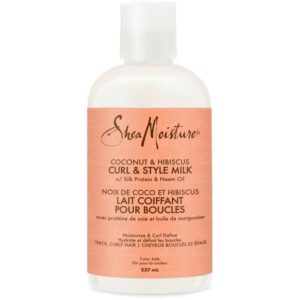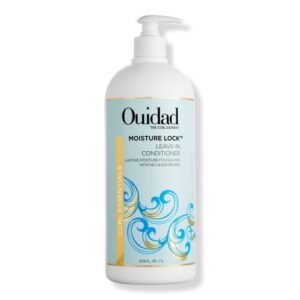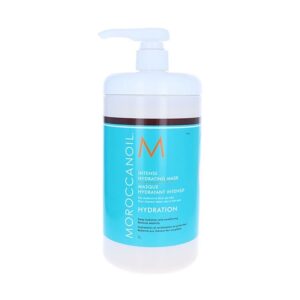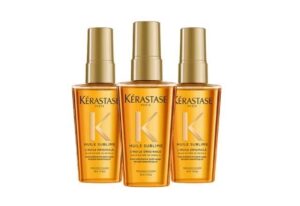HAIR BREAKAGE
Tackling Hair Breakage: Effective Tips for Healthy, Strong Locks
Hair breakage is a common and frustrating issue that affects people of all hair types and textures. Whether you're dealing with split ends, snapping strands, or thinning at the hairline, excessive breakage can compromise the overall health and appearance of your hair, leading to a loss of length, volume, and manageability.
Fortunately, there are proven, science-backed strategies and techniques you can implement to effectively manage and prevent hair breakage. In this comprehensive blog post, we'll explore a range of practical tips and solutions to help you achieve stronger, more resilient locks that are able to withstand the daily stresses and environmental factors that can contribute to breakage.
Identifying the Causes of Breakage:
The first step in tackling hair breakage is to understand the underlying causes. Knowing the specific factors that are leading to your breakage will allow you to address the issue at the source and implement the most effective remedies.
Some of the most common causes of hair breakage include:
Excessive Heat Styling: Frequent use of hot tools like blow dryers, curling irons, and straighteners can significantly weaken and damage hair strands over time, leading to increased breakage.
Chemical Treatments: Coloring, bleaching, relaxing, and other chemical processes can compromise the hair’s structural integrity, making it more prone to splitting and snapping.
Mechanical Stress: Tight hairstyles, excessive brushing or combing, and rough handling can all put undue tension on the hair, causing it to break.
Nutritional Deficiencies: A lack of key vitamins, minerals, and nutrients needed for healthy hair growth and maintenance can contribute to breakage.
Genetics and Age: Some people are simply more prone to hair breakage due to natural factors like hair texture, density, and the aging process.
By identifying the specific factors that are causing your hair breakage, you can then implement targeted strategies to address the issue at the source.
Implementing a Gentle Haircare Routine:
One of the most effective ways to manage and prevent hair breakage is to adopt a gentle, nourishing haircare routine. This involves making intentional choices about the products and techniques you use to cleanse, condition, and style your hair.
Some key components of a breakage-busting haircare routine include:
Using Sulfate-Free, Moisturizing Shampoos and Conditioners: Harsh, stripping shampoos can rob your hair of its natural oils, leading to dryness and increased fragility. Opt for gentle, sulfate-free formulas that deliver deep hydration and strengthening benefits. Consider using SheaMoisture Coconut & Hibiscus Curl & Shine Shampoo and Conditioner.

Limiting Heat Styling: Whenever possible, allow your hair to air-dry rather than subjecting it to the high heat of blow dryers, curling irons, and flat irons. The less heat exposure your hair endures, the better.
Gently Detangling: Approach the detangling process with care, using a wide-tooth comb or your fingers to gently work through knots and tangles. Avoid excessive brushing, especially when your hair is wet and more prone to breakage.Try Ouidad Moisture Lock Leave-In Conditioner. It’s enriched with botanical extracts and vitamins to detangle, hydrate, and protect hair from environmental stressors.

Applying Leave-In Treatments: Fortify your strands with nourishing leave-in conditioners, serums, and oils that can help strengthen, protect, and prevent future breakage. Incorporate It’s a 10 Miracle Leave-In Product into your routine. This multi-functional product repairs, adds shine, controls frizz, and protects hair from heat styling and UV damage.

Choosing Protective Hairstyles: Styles that minimize friction and tension, like loose braids or buns, can help reduce mechanical stress on your hair and keep breakage at bay.
Consistency is key when it comes to maintaining a gentle haircare routine. Make these practices a regular part of your self-care regimen, and you’ll start to see the benefits in the form of stronger, more resilient locks.
Optimizing Hair Health from the Inside Out:
While external haircare plays a crucial role in managing breakage, it’s also important to consider the internal factors that can contribute to the health and strength of your strands. Ensuring your body is getting the necessary nutrients to support optimal hair growth and maintenance can be a game-changer in your battle against breakage.
Focus on incorporating the following into your diet and supplement routine:
Protein: Hair is made up primarily of a structural protein called keratin, so consuming adequate amounts of high-quality protein is essential for maintaining strong, resilient hair.
Iron, Zinc, and Biotin: These essential vitamins and minerals help promote healthy hair growth and prevent breakage.
Omega-3 Fatty Acids: Healthy fats like those found in salmon, walnuts, and chia seeds can nourish the scalp and strengthen hair from the root.
Antioxidants: Compounds like vitamins C and E help protect hair from environmental stressors that can lead to damage and breakage.
You may also want to consider taking a specialized hair health supplement that combines these key nutrients in an easy-to-consume formula. Just be sure to consult with a healthcare professional before adding any new supplements to your regimen.
Treating Existing Breakage:
In addition to your daily haircare routine and nutritional support, there are targeted treatments and techniques you can incorporate to address any existing hair breakage:
Deep Conditioning Treatments: Intensely moisturizing masks and deep conditioners can help repair damage, strengthen the hair cuticle, and prevent future breakage. Try Moroccanoil Intense Hydrating Mask enriched with argan oil. This deep conditioning treatment restores elasticity and moisture balance, making hair more manageable and less prone to breakage.

Protein Treatments: Applying protein-rich treatments can help rebuild the internal structure of damaged hair strands, restoring their strength and resilience.
Regular Trims: Frequent, careful trimming of split ends can help stop breakage from traveling up the hair shaft and becoming more severe.
Hair Serums and Oils: Nourishing, strengthening ingredients like ceramides, amino acids, and fatty acids can be applied topically to fortify and protect the hair. Consider Kérastase Elixir Ultime Oil Serum infused with a blend of precious oils including maize, argan, camellia, and pracaxi oils. This versatile serum adds shine, nourishes, and protects hair from heat styling and environmental damage.

Be patient and consistent with these targeted treatments, as it may take some time to see the full benefits. Pair them with your gentle daily haircare routine for maximum results.
Protecting Hair During Styling:
When it comes to styling your hair, it’s important to be mindful of techniques and practices that can contribute to breakage.
Avoid:
Excessive Brushing: Especially when your hair is wet and more prone to breakage, limit brushing and instead use your fingers or a wide-tooth comb to gently detangle.
Tight Hairstyles: Pulling your hair back into tight ponytails, buns, or braids can put undue tension on the strands, leading to breakage over time.
Rough Handling: Be gentle when towel-drying, combing, and otherwise manipulating your hair to minimize mechanical stress.
Overuse of Hot Tools: Limit the frequency and duration of heat styling to prevent cumulative damage to the hair’s structure.
Instead, opt for gentler styling methods like air-drying, low-tension hairstyles, and protective techniques like silk or satin bonnets or scarves to minimize friction and breakage.
Seeking Professional Help:
If you’ve tried various strategies and are still experiencing persistent, severe hair breakage, it may be time to consult a hair care professional, such as a dermatologist or trichologist. These experts can perform a thorough assessment, identify any underlying medical or genetic factors contributing to your breakage, and provide personalized recommendations for treatment.
In some cases, prescription-strength treatments or in-office procedures may be necessary to address stubborn breakage. A professional can also help rule out any underlying scalp or hair disorders that may be the root cause of your breakage issues.
Tackling hair breakage requires a multi-faceted approach, but with the right strategies and consistent care, you can achieve stronger, healthier locks that are able to withstand the daily stresses and environmental factors that can lead to breakage.
By implementing a gentle haircare routine, optimizing your hair health from the inside out, utilizing targeted treatments for existing damage, and protecting your strands during styling, you can regain the confidence and resilience you deserve. Remember, patience and persistence are key – with the right care, you can transform your hair from fragile to flourishing.




